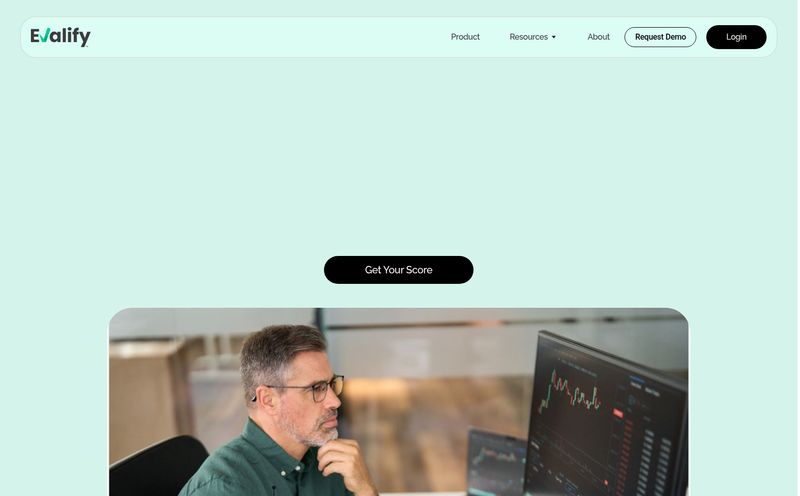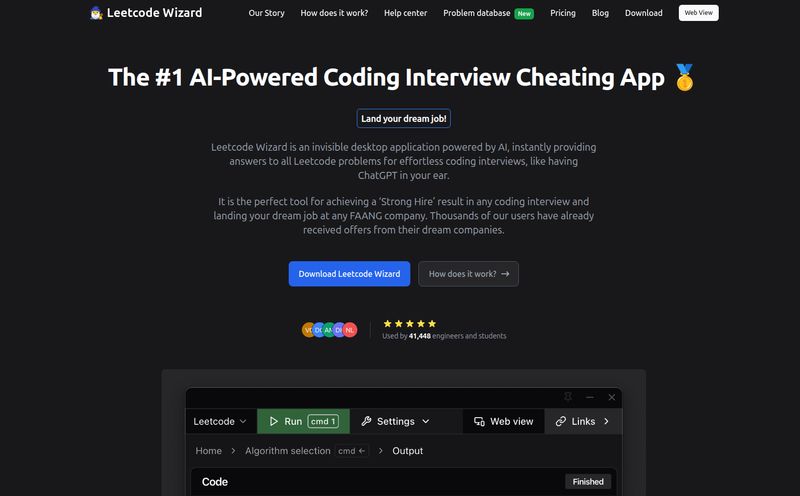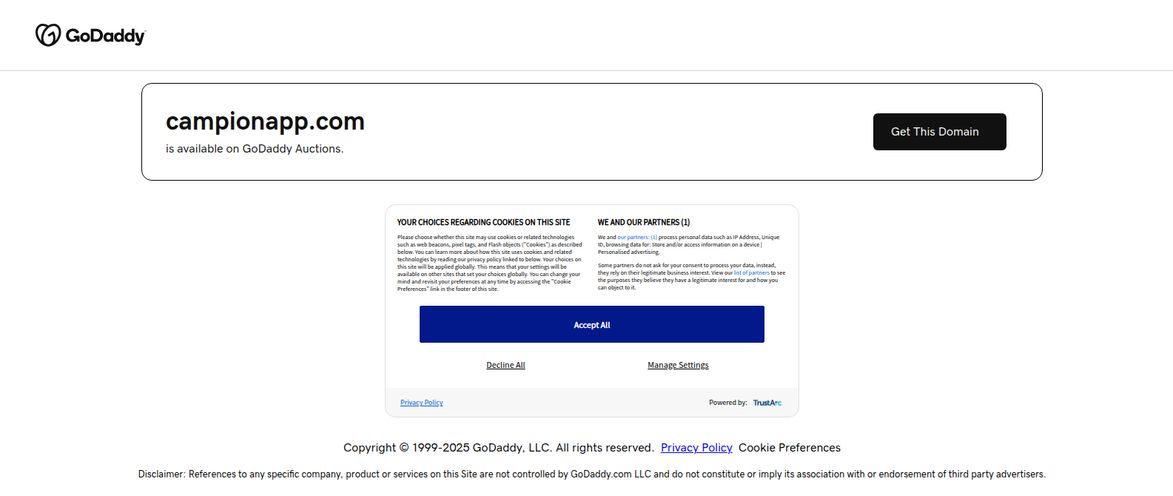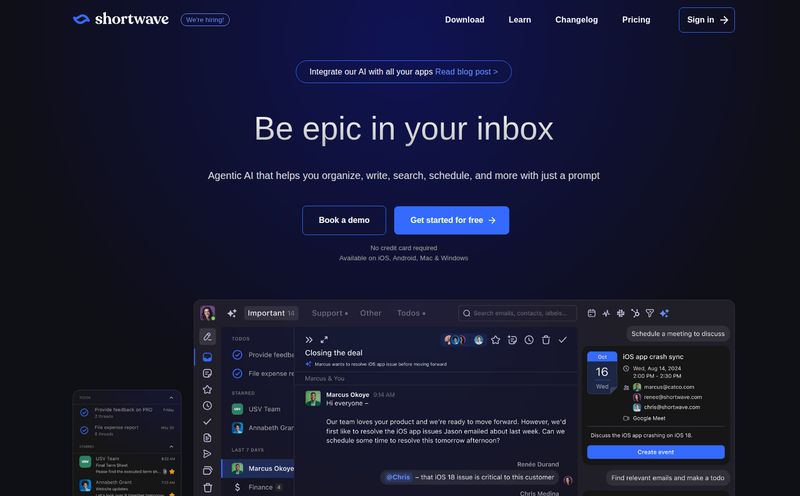If you’re a product manager, you know the struggle. Your life is a constant juggling act between a dozen different tabs. You’ve got customer feedback in Gong, user tickets in Zendesk, designs in Figma, roadmaps in Jira, and endless, endless threads in Slack and Google Docs. You're not just a manager; you're the human glue holding it all together. It’s exhausting.
So, whenever a new tool pops up promising to be the 'single source of truth', my inner cynic just rolls its eyes. We've heard it all before, right? But every now and then, something comes along that makes me lean in a little closer. This time, it’s a platform called Augmeta.
Their pitch isn’t about replacing everything you use. Instead, it’s about embedding smart, AI-driven workflows into your existing chaos to make sense of it. They claim to be an “AI-native product peer.” A bold claim. But is it just another fancy wrapper for a language model, or is there something more to it? I decided to dig in.
So, What is Augmeta, Really?
At its heart, Augmeta is an AI platform designed specifically—and I mean specifically—for product teams. This isn’t a generic, one-size-fits-all AI assistant. The company is refreshingly upfront about this: “Purpose-built for product teams, not every team.” I love that. In a world of tools trying to be everything to everyone, choosing a niche is a sign of confidence. It shows they understand the unique pains of their target user.
They’ve even given their AI a name: Xander. The idea is that Xander acts like a tireless, brilliant junior PM on your team. It sits alongside you, helping to connect the dots, surface critical information right when you need it, and automate the tedious parts of the product lifecycle—from discovery and planning all the way to execution and iteration.
Ending the Product Management Tool Sprawl Nightmare
Let's paint a picture. You're trying to write a Product Requirements Document (PRD). To do it right, you need to pull the latest user research from that presentation marketing made, reference the technical constraints discussed in a Slack channel three weeks ago, check the design specs in Figma, and synthesize the top 10 feature requests from Intercom. Each context switch is a tiny tear in your productivity fabric. By the end of the day, you're just a frayed mess.
This is the exact problem Augmeta aims to solve. It’s not about adding yet another destination to your daily tour of apps. It's about creating a central nervous system that understands the information flowing through your existing tools. Think of it less as a new tool and more as an intelligent layer over your current stack. A pretty compelling proposition, if they can pull it off.
The Augmeta Features That Actually Seem Useful
Okay, let’s get into the meat of it. A platform is only as good as its features. Here’s what stood out to me from their site.
A Truly Unified Workspace
Augmeta talks about bringing the “voice-of-customer, engineering, design, marketing, and more into one cohesive stream.” This is the holy grail. Imagine being able to ask a question like, “What are the biggest customer complaints related to our new checkout flow?” and getting a synthesized answer pulled from support tickets, sales calls, and user interviews, all without leaving the document you're working in. That doesn't just save time; it leads to better, more data-informed decisions. It could genuinely reduce the number of 'quick sync' meetings we all suffer through.
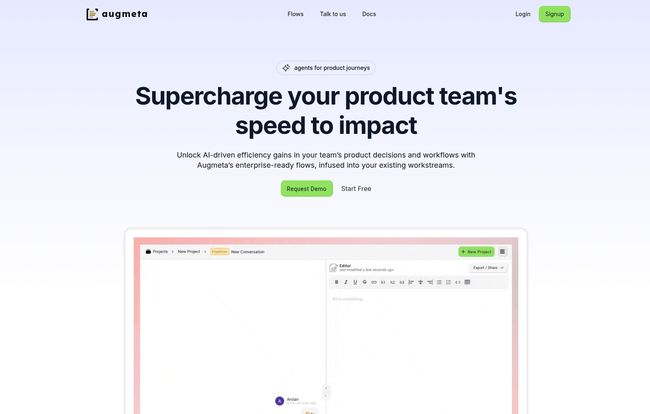
Visit Augmeta
'Agentic Flexibility' Sounds Like a Buzzword, But It's a Big Deal
I'll admit, "agentic flexibility" sounds like pure marketing jargon. But what it means is actually powerful. Augmeta allows you to use their pre-built AI workflows or create your own custom AI agents. This is a step beyond simple prompts. It's like building mini-apps or automations tailored to your team's specific needs. For example, you could create an agent that automatically drafts user stories based on an approved PRD or one that scans all new customer feedback for mentions of competitors. It's like having a customizable Zapier but with a PhD in product management.
Context is King, and Augmeta Knows It
This is maybe the most important part. A generic chatbot can’t help you much because it has no context about your project, your team, or your company's goals. Augmeta’s AI, Xander, is designed to be “context-aware.” It surfaces information as you write it. So if you mention a feature called “Project Titan,” Xander can proactively pull up the relevant design files, technical specs, and stakeholder comments related to it. This eliminates the need to stop what you're doing, open four different tabs, and search for that one piece of information you know you saw somewhere. That's not just an efficiency gain; it’s a sanity-saver.
Let's Talk Security and Data Privacy (The Elephant in the AI Room)
Look, no one is going to plug their company’s most sensitive intellectual property into an AI tool without asking some serious questions about security. I’ve seen this debate play out in countless forums and Slack channels. Augmeta seems to get this, and they address it head-on.
Their security page highlights a few critical promises:
- No training on your data. This is the big one. They state, “Xander never trains on your data across customers.” Your proprietary information stays yours and doesn't get used to improve the model for your competitors. Thank goodness.
- Full Visibility and Control. All the AI functions are permissioned and audited. This gives admins the control they need to ensure compliance and proper usage.
- Compliance-Ready. They are transparent that their SOC 2 Type II compliance is currently “in progress.” I actually appreciate this honesty. It shows they're taking it seriously and are on the path to full enterprise-readiness.
Who is Augmeta For? (And Who Should Skip It)
As they say themselves, Augmeta is for product teams. If you’re a Product Manager, Product Owner, CPO, or a designer/engineer who works hand-in-glove with product, this is built for you. If your team is struggling with information silos, inefficient workflows, and the sheer cognitive load of modern product development, Augmeta is definitely worth investigating.
Who isn't it for? Well, if you're a marketing team looking to write ad copy or a sales team trying to automate outreach, this probably isn't the right fit. There are other, more general AI tools for that. Augmeta's strength is its specificity, and trying to use it for something else would be like using a surgeon’s scalpel to chop vegetables. You can do it, but it’s not the right tool for the job.
What's the Deal with Augmeta's Pricing?
Here's a fun little discovery. When I tried to find their pricing page to see how much this would set a team back, the link led to a 404 “Page not found” error. Now, this isn't necessarily a red flag. For a newer B2B SaaS platform, this is pretty common. They are likely still finalizing their pricing tiers or are focusing on custom enterprise demos first.
The homepage has a clear “Start Free” button, which suggests either a free trial or a freemium model. My guess would be a tiered system, probably priced per user per month, with different levels of features and agent customization. For now, it seems the best way to find out the cost is to sign up and see for yourself.
Frequently Asked Questions about Augmeta
So, is Augmeta just another AI copilot like the one in my code editor?
Not exactly. While it has copilot-like features, it's much more specialized. A coding copilot understands code. Augmeta is designed to understand the entire product development ecosystem—from customer interviews to marketing briefs to engineering tickets. It's a specialist, not a generalist.
My company is super strict about data. Is Augmeta safe to use?
They've built their platform with enterprise security in mind. The most important promise is that they don't train their AI on your data to serve other customers. With SOC 2 compliance in the works, they are clearly taking the right steps to be a trusted partner for businesses.
Do I have to be a prompt engineering wizard to use this?
It doesn't seem like it. The whole point is that the AI is embedded and context-aware, meaning it should work intuitively without you needing to craft perfect, elaborate prompts. The option to build custom agents might require a bit more know-how, but the core functionality appears to be user-friendly.
What's a real-world example of how a PM would use Augmeta?
Imagine you're writing a spec for a new feature. As you type, Augmeta could automatically surface relevant user quotes from a research repository, link to the parent initiative in your roadmap tool, and flag potential dependencies with another team’s project—all in real-time within your document.
Is Augmeta for large enterprises or small startups?
It seems scalable for both. A startup could use it to bring much-needed structure and speed to a small, fast-moving team. A large enterprise could use it to break down the massive information silos that inevitably form in big organizations. The enterprise-grade security features suggest they're definitely targeting larger companies as well.
Final Thoughts: Is Augmeta the Real Deal?
I have to say, I'm cautiously optimistic. In the noisy, crowded market of AI tools, Augmeta’s focused approach is a breath of fresh air. They aren't trying to boil the ocean; they're trying to solve a very specific, very painful set of problems for a very specific audience. And that’s smart.
The success of a tool like this will ultimately hinge on how seamless the integrations are and how truly “aware” the context engine is. The ideas are all the right ones. If the execution matches the vision, Augmeta could become an indispensable part of the modern product stack. It has the potential to move product managers away from being full-time information archeologists and back to what they do best: building amazing products.
My advice? If you're in a product team and any of this resonated with you, hit that “Start Free” button on their site. It’s the only way to know for sure if Xander is the AI teammate you’ve been waiting for.
